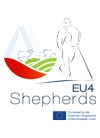Vertebrate Zoology
|
Course title: |
Vertebrate Zoology |
|
|
Course code: |
RZVZO |
|
|
ECTS: |
3 |
|
|
In-class hours |
Lectures: |
15 |
|
Laboratory work/Tutorials: |
15 |
|
|
Self-preparation hours |
Practical training: |
- |
|
Other: |
45 |
|
|
Total hours: |
75 |
|
|
Language: |
English |
|
|
Study cycle: |
Bachelor, Master |
|
|
Semester: |
Winter & Summer |
|
|
Faculty: |
Faculty of Plant Protection and Agriecology |
|
|
Name of the lecturer(s): |
Assoc. Prof. Tatyana Bileva, PhD |
|
|
Mode of delivery: |
Face-to-face, distance learning |
|
|
Prerequisites: |
Students studying or graduated in Biological sciences |
|
|
Learning outcomes of the course unit: |
This part of the Zoology course considered taxonomy, morphology, physiology and ecological adaptations of vertebrates (Vertebrata). Great attention is paid to the ecology of vertebrates. This creates an opportunity for reflection on their relationship with other organisms and understanding the role of environmental factors that affect their vital activity. Knowledge of the ecology of vertebrates clarifies regularities in the distribution of animals, their role in nature and their importance to man. Special attention is paid to protected species and endangered vertebrates. |
|
|
Course contents: |
Lectures 1. Phylum Chordata. The characteristics of the phylum. Systematics. Subphylum Vertebrata - Class Cyclostomata - biology, ecology, distribution and practical importance of the representative species. 2. The Pisces (Fishes). Characteristics of the Classes Chondrichthyes, Osteichthyes. The biology of the representative fishes. The Ecological groups. Conservation of fishes. The economical and practical importance of the fishes. Aquacultures. 3. Class Amphibia (Amphibians). Characteristics, systematics and biology of the Orders Urodela, Anura, Apoda. Ecological groups. Economic importance and conservation. 4. Class Reptilia (Reptiles). Turtles and Sweets. Characteristics and systematics. Biological features of individual species.Ecological groups. Economic importance and conservation. Means of protection and assault. 5. Class Aves (Birds). Impennes, Ratitae and Volantes. Characteristics and systematics. Structural and functional adaptation for flight. Biological characteristics of birds. Ecological groups. Feeding, breeding, migration. Significance in nature and human life. Conservation status. 6. Class Mammalia. Higher (Placental) mammals. Characteristics and description of the representatives of the orders Insectivora, Rodentia, Chiroptera, Carnivora, Pinnipedia, Cetacea, Artiodactyla, Perissodactyla. Exercises 7. Phylum Chordata. Subphylum Vertebrata. Pisces. General morphology and Anatomy. External specific features. Classification of Fishes. Identification of species from class hondrychtyes and Osteichtyes. Descriptive enumeration of Fishes. 8. Class Amphibia. External specific features. General anatomy. Descriptive enumeration of amphibians. 9. Class Reptilia. General morphology and anatomy. Classification of reptiles. Identification of representative species. 10. Class Aves. General morphology and Anatomy. External specific features. Internal specific features. Classification of birds. Descriptive enumeration of birds. Protected species. Conservation. 11. Class Mammalia. External specific features. Internal specific features. Descriptive enumeration of mammals. Game breeding.
|
|
|
Recommended or required reading: |
1.Zoology, Miller-Harley, 5 th editition, 2001, The Mc Graw-Hill Companies; 2. Zoology, Miller-Harley, 10 th editition, 2016, The Mc Graw-Hill Companies; 3. Zoology, Maria-Dolores Garcia, 2012, ISBN 978-953-51-0360-8; DOI: 10.5772/2212; 4. Integrated principles of Zoology, 14 edition, Hickman et al., 2008, www.mhhe.com 5. A text-book of Agricultural Zoology, Fred Theobald, 2010, www.worldLibrary.net 6. Outlines of General Zoology, 2010, www.worldLibrary.net; 7. The principles of Applied Zoology, Robert Arnold Wardle, 1929, Longmans, Green and Co. |
|
|
Planned learning activities and teaching methods: |
Monological explanation (lecture, presentation,briefing, tutorials), Dialogue methods(conversation,discussion) Lectures and seminars are conducted according to generally accepted requirements, maximum use of available teachinics ( microscopes and multimedia) and independent work by zoological material. |
|
|
Assessment methods and criteria: |
The exercises are certified in the case of records of all issues. The current assessment is based on current control after each exercise, practical exam and summarizing test on the lecture material. The rating is a six-point scale and a collection of practical and theoretical exam. |
|
 - Events on the occasion of the 80th anniversary of AU
- Events on the occasion of the 80th anniversary of AU











